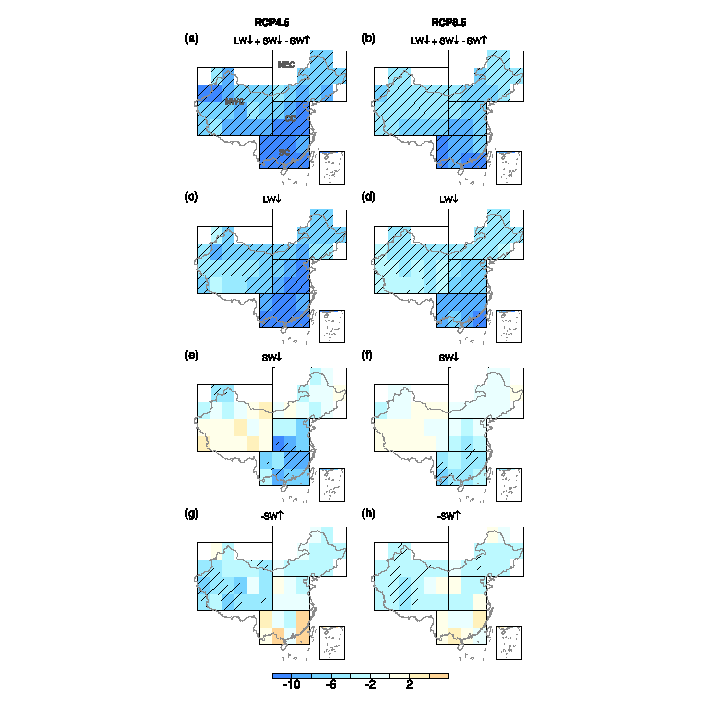At the 21st Conference of the United Nations Framework Convention on Climate Change (UNFCCC) in 2015 in Paris, the warming target below 2°C at the end of this century was written in the final document Paris Agreement and a higher target of below 1.5°C is suggested. When will we see the 2°C warming? It depends on scenarios of anthropogenic green-house gas emission. However, for a given scenario, the estimated 2°C threshold-crossing time differs from model to model. Much larger model spread is seen when we focus on regional scale. What is the factor responsible for the uncertainty?
“The key is that sensitivity of climate models to green-house gas forcing is different”, said Dr. CHEN Xiaolong from Institute of Atmospheric Physics, Chinese Academy of Sciences. He further explained, “Climate sensitivity, or the global mean temperature change under doubled CO2 concentration relative to the pre-industrial level, strongly depends on how physical processes are described in climate models”
Recently, Dr. CHEN and Prof. ZHOU Tianjun investigated the uncertainty of 2°C threshold-crossing time over the China region based on two future scenarios (RCP4.5 and RCP8.5) from 40 climate models participating the Coupled Model Intercomparison Project – Phase 5 (CMIP5). Their results show that the averaged warming over China may breach the 2°C threshold around 2030 in both the scenarios. However, the crossing time in models with the fastest and slowest warming can differ by at least 20 years. Large spread in models’ climate sensitivity is one of the most important factors.
“The higher climate sensitivity is in a model, the stronger is green-house effect; and the less stratus cloud over the monsoon region, the less snow cover on the Tibetan Plateau. “ Dr. CHEN described their findings in a paper recently published in Science Bulletin. These changes increase the downward longwave and shortwave radiation and decrease the shortwave reflected by the surface, all of which advance the local 2°C threshold-crossing time (Fig. 1).

Fig 1. Intermodel anomalies of 2°C threshold-crossing time associated with local surface radiation changes under RCP4.5 (left column) and RCP8.5 (right column) scenarios. Negative value denotes advanced time. Downward longwave corresponds to green-house effect, reflecting water vapor-lapse rate feedback; downward shortwave corresponds to changes in stratus cloud, reflecting cloud shortwave feedback; upward shortwave corresponds to changes in snow cover, reflecting surface albedo feedback. Stripped regions exceed 95% confidence level.(Chen and Zhou, 2016)
The investigation focusing on 2°C warming target has important implication for the uncertainty of 1.5°C threshold-crossing time at regional and global scales.
For more details please refer to:
Chen, Xiaolong, Tianjun Zhou, 2016 Uncertainty in crossing time of 2°C warming threshold over China. Sci. Bull., 61(18):1451–1459, doi:10.1007/s11434-016-1166-z.
